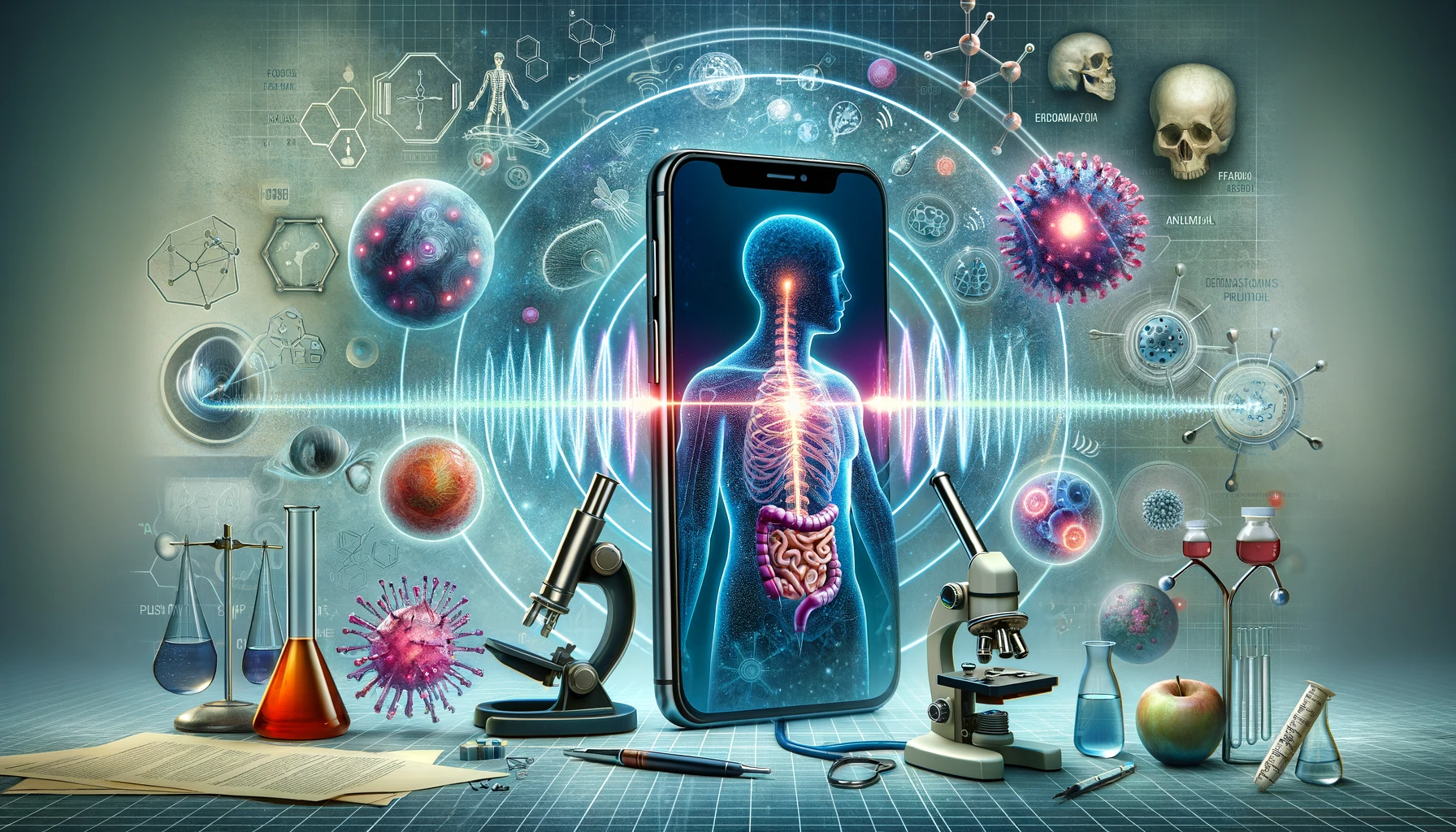Millions of people around the world are becoming increasingly sensitive to radio frequency radiation; often manifesting itself as pain and mild inflammation (Latin, īnflammō, “I ignite, set alight”) brought on through the complex biological response of vascular tissues as a result of harmful man-made stimuli — such as stressed or damaged cells from exposure to microwave radiation produced by cell phones.
Cell phone users sensitive to radiation exposure have long complained of headaches and a burning sensation directly where a phone is used nearest to the body. Through their own pain and suffering, many of these cell phone users have made the connection between cell phone usage and the body’s natural defenses against toxicants.
In a new study published September 2014, in the International Braz J Urol, researchers wanted to understand the impact of electromagnetic waves from cell phones on mammalian tissue.
The researchers conclusion : “Intensive use of mobile phones has negative impact on bladder tissue as well as the other organs. Keeping a minimum level of mobile phone use makes it easy to be kept under control of diseases in which inflammation is an etiologic factor”
The scientists from the Department of Urology, Haydarpasa Numune Training and Research Hospital, Istanbul, Turkey sought answers to understand the health implications arising from technological developments that provide a lot of conveniences in our lives. This issue is one of the risks that arise along with these conveniences. In this study researchers demonstrated that electromagnetic waves from cell phones have a severe inflammatory effect on bladder tissue with reason to believe other organ tissues are affected as well.
The study abstract is available here http://www.ncbi.nlm.nih.gov/pubmed/25251956?dopt=Abstract
MATERIALS AND METHODS:
Twenty-one adult male albino rats were divided into three equal groups. Group 1 was exposed to electromagnetic wave for 8 hours per day for 20 days and then their bladders were taken off immediately. Group 2 was firstly exposed to electromagnetic wave for 8 hours per day for 20 days then secondly another for 20 days without exposition to electromagnetic wave and then their bladders were taken off. Group 3 was the control group and they were not exposed to electromagnetic wave.
RESULTS:
Under microscopic examination of bladder tissue, in the first group severe inflammatory cell infiltration was seen in lamina propria and muscle layer in contrast to intact urothelium. In the second group mild inflammatory cell infiltration was seen in lamina propria and muscle layer. The mean scores for the three groups were 5.5 ± 2.5, 0.8 ± 1.3 and 1.2 ± 1.5 respectively. Mean score of group 1 was statistically higher than others (p = 0.001).
Diseases and Their Relationship with Inflammation
Disease Mechanism Allergy 4 Immune Mediated Types + Sensitivities, all of which cause inflammation Alzheimer’s Chronic inflammation destroys brain cells Anemia Inflammatory cytokines attack erythropoietin production Ankylosing Spondylitis Inflammatory cytokines induce autoimmune reactions against joint surfaces Asthma Inflammatory cytokines induce autoimmune reactions against airway lining Autism Inflammatory cytokines induce autoimmune reactions in the brain arresting right hemisphere development Arthritis Inflammatory cytokines destroy joint cartilage and synovial fluid Carpal Tunnel Syndrome Chronic inflammation causes excessive muscle tension shortening tendons in the forearm and wrist compressing the nerves. Celiac Chronic immune mediated inflammation damages intestinal lining Crohn’s Disease Chronic immune mediated inflammation damages intestinal lining Congestive heart failure Chronic inflammation contributes to heart muscle wasting Eczema Chronic inflammation of the gut and liver with poor detoxification and often antibodies against Transglutaminase-3. Fibromyalgia Inflamed connective tissue often food allergy related and exacerbated by secondary nutritional and neurological imbalances. Fibrosis Inflammatory cytokines attack traumatized tissue Gall Bladder Disease Inflammation of the bile duct or excess cholesterol produced in response to gut inflammation GERD Inflammation of the esophagus and digestive tract nearly always food sensitivity and pH driven Guillain-Barre Autoimmune attack of the nervous system often triggered by autoimmune response to external stressors such as vaccinations. Hashimoto’s Thyroiditis Autoimmune reaction originating in the gut triggered by antibodies against thyroid enzymes and proteins Heart attack Chronic inflammation contributes to coronary atherosclerosis Kidney failure Inflammatory cytokines restrict circulation and damage nephrons and tubules in the kidneys Lupus Inflammatory cytokines induce an autoimmune attack against connective tissue Multiple Sclerosis Inflammatory cytokines induce autoimmune reactions against myelin Neuropathy Inflammatory cytokines induce autoimmune reactions against myelin and vascular and connective tissues which irritate nerves. Pancreatitis Inflammatory cytokines induce pancreatic cell injury Psoriasis Chronic inflammation of the gut and liver with poor detoxification Polymyalgia Rheumatica Inflammatory cytokines induce autoimmune reactions against muscles and connective tissue Rheumatoid Arthritis Inflammatory cytokines induce autoimmune reactions against joints Scleroderma Inflammatory cytokines induce an autoimmune attack against connective tissue Stroke Chronic inflammation promoted thromboembolic events Surgical complications Inflammatory cytokines (often pre-dating the surgery) slow or prevent healing








